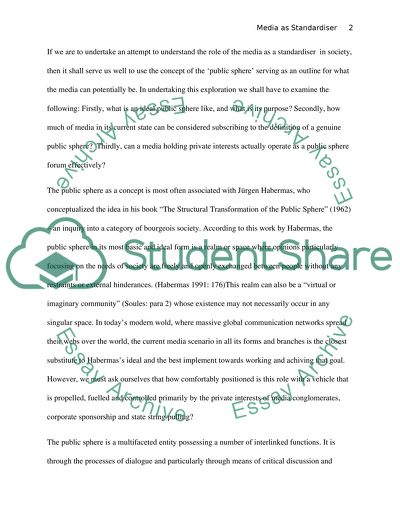Cite this document
(“Media as a Global Standardiser Assignment Example | Topics and Well Written Essays - 2500 words”, n.d.)
Media as a Global Standardiser Assignment Example | Topics and Well Written Essays - 2500 words. Retrieved from https://studentshare.org/journalism-communication/1448950-drawing-upon-habermasyie-notion-of-the-public
Media as a Global Standardiser Assignment Example | Topics and Well Written Essays - 2500 words. Retrieved from https://studentshare.org/journalism-communication/1448950-drawing-upon-habermasyie-notion-of-the-public
(Media As a Global Standardiser Assignment Example | Topics and Well Written Essays - 2500 Words)
Media As a Global Standardiser Assignment Example | Topics and Well Written Essays - 2500 Words. https://studentshare.org/journalism-communication/1448950-drawing-upon-habermasyie-notion-of-the-public.
Media As a Global Standardiser Assignment Example | Topics and Well Written Essays - 2500 Words. https://studentshare.org/journalism-communication/1448950-drawing-upon-habermasyie-notion-of-the-public.
“Media As a Global Standardiser Assignment Example | Topics and Well Written Essays - 2500 Words”, n.d. https://studentshare.org/journalism-communication/1448950-drawing-upon-habermasyie-notion-of-the-public.


